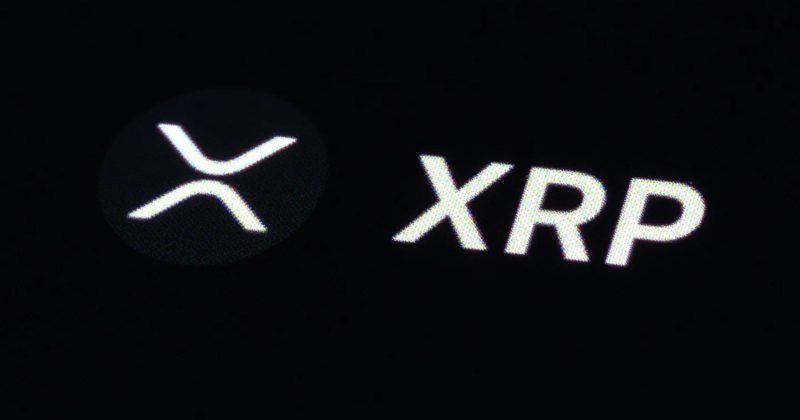
Bitcoin (BTC) remained relatively stable over the weekend, oscillating between $81,000 and $85,000. Despite the turmoil in the traditional markets, the flagship cryptocurrency has held firm above $80,000, with the stability highlighting its potential as a safe haven asset. BTC is currently down almost 1%, trading at $82,836 and holding above $80,000 despite ETF outflows, growing trade tensions, and concerns about delayed rate cuts by the Federal Reserve. Bitcoin (BTC) Holds Firm Despite Heightened Volatility Bitcoin (BTC) remained above $80,000 on Friday and Saturday despite broader market turmoil and selling pressure. However, demand has waned as fears of a full-blown trade war escalate, along with risks of a recession and a delayed rate cut decision by the Federal Reserve. Markets also witnessed BTC decoupling from the US equity markets and outperforming gold, signaling a significant shift in market dynamics. Market intelligence platform Santiment stated, “Social media has been buzzing with mentions of crypto’s ‘decoupling’ from stock markets, according to data from X, Reddit, Telegram, 4Chan, Farcaster, and BitcoinTalk. Following the S&P 500‘s -10.5% combined losses on Thursday and Friday alone, traders are optimistic that Bitcoin and other cryptocurrencies are fairly insulated from the US & China tariffs that have rocked global economies.” It also said that crypto becoming less reliant on the stock market is a promising sign. “If the crypto markets are indeed becoming less and less reliant on stock markets, this would be an encouraging sign. Historically, most of the cryptocurrency’s biggest bull cycles have come when there is zero (neither a negative nor positive) correlation between the two sectors.” Spot Bitcoin ETFs Register Outflows Despite Bitcoin’s relative stability, spot Bitcoin ETFs registered considerable outflows, signaling investor caution and indicating that the rally may lack strong investor backing. Federal Reserve Chair Jerome Powell also threw another curveball for the markets, suggesting a potential delay to Fed rate cuts. According to data from Farside Investors, the WisdomTree Bitcoin Fund (BTCW) registered net outflows of $44.6 million, while the iShares Bitcoin Trust (IBIT) registered net outflows of $35.5 million. Bitwise Bitcoin ETF (BITB) registered net outflows of $24.1 million, and ARK21Shares Bitcoin ETF (ARKB) saw net outflows of $22.2 million. However, Grayscale Bitcoin Mini Trust, Fidelity Wise Origin Bitcoin Fund (FBTC), and Franklin Bitcoin ETF (EZBC) registered net inflows. As a result, the US spot Bitcoin ETF market registered net total outflows of $165 million, ending a two-week inflow streak. Fed Issues Stagflation Warning Bitcoin and altcoins could come under renewed pressure after Federal Reserve Chair Jerome Powell warned President Donald Trump’s tariffs could lead to higher inflation and slow growth. Powell said on Friday, “Our obligation is to keep longer-term inflation expectations well anchored and to make certain that a one-time increase in the price level does not become an ongoing inflation problem.” High inflation and high unemployment can lead to stagflation, which could become difficult to manage. This is because measures taken to fix one issue, like cutting interest rates to boost growth, could worsen the other issue and vice versa. Powell also said he was in no hurry to cut interest rates as inflation remained high, a stance supported by other officials like Raphael Bostic and Adriana Kugler. However, President Donald Trump urged Powell to cut interest rates. According to market experts, a more hawkish Fed could negatively impact Bitcoin, altcoin, and stock prices. Bitcoin (BTC) Price Analysis Bitcoin (BTC) is holding above $80,000 as the weekend draws to a close. BTC’s relative stability comes despite the market turmoil and highlights its potential as a safe haven asset. The tech-heavy Nasdaq, known to be positively correlated to Bitcoin, dropped over 11% since President Trump’s announcement of sweeping reciprocal tariffs on 180 nations, escalating global trade tensions and drawing retaliatory levies from China. David Hernandez, crypto investment specialist at 21Shares, stated, “The S&P 500 is down roughly 5% this week as investors brace for trade-driven earnings headwinds. Meanwhile, Bitcoin has shown impressive resilience. After briefly dipping below $82,000, it rebounded quickly, reinforcing its status as a macro hedge in times of macroeconomic stress. Its relative strength could continue to attract institutional inflows if broad market volatility persists.” However, analysts have not ruled out sharp downside volatility in the short term, especially as the “Treasury market basis trade” faces risks due to heightened turbulence in bond prices. BTC traded in bearish territory over the previous weekend, dropping over 3% on Friday, slipping below the 200-day SMA and $85,000 and settling at $84,422. Price action remained bearish over the weekend as BTC fell below the 20-day SMA on Saturday and settled at $82,704. The price registered a marginal decline on Sunday, settling at $82,404. BTC faced volatility on Monday as buyers and sellers struggled to establish control. Buyers ultimately gained the upper hand as the price registered a marginal increase. Bullish sentiment intensified on Tuesday as BTC rose over 3%, surging past the 20-day SMA and $85,000 to settle at $85,152. The flagship cryptocurrency surged to an intraday high of $88,624 on Wednesday as bullish sentiment intensified. However, BTC lost momentum after reaching this level and dropped over 3%, slipping below $85,000 and the 20-day SMA and settling at $82,525. Source: TradingView BTC recovered on Thursday despite significant selling pressure, rising almost 1% and settling at $83,199. The price continued its upward trajectory on Friday, registering an increase of 0.76% and settling at $83,828. However, it lost momentum over the weekend and registered a marginal decline on Saturday, dropping to $83,423. The current session sees BTC down almost 1% as sellers look to drive it below $80,000. However, BTC has not ceded ground to the bears and has held firm above this level. If buyers regain control, BTC could move past $85,000 and push toward $90,000. Disclaimer: This article is provided for informational purposes only. It is not offered or intended to be used as legal, tax, investment, financial, or other advice.
Bitzo
You can visit the page to read the article.
Source: Bitzo
Disclaimer: The opinion expressed here is not investment advice – it is provided for informational purposes only. It does not necessarily reflect the opinion of BitMaden. Every investment and all trading involves risk, so you should always perform your own research prior to making decisions. We do not recommend investing money you cannot afford to lose.
Crypto Chaos: Dogecoin (DOGE) at Risk of More Losses as Market Volatility Spikes

Dogecoin started a fresh decline from the $0.1720 zone against the US Dollar. DOGE is consolidating and might struggle to recover above $0.1550. DOGE price started a fresh decline below the $0.1650 and $0.1550 levels. The price is trading below the $0.1600 level and the 100-hourly simple moving average. There is a connecting bearish trend line forming with resistance at $0.160 on the hourly chart of the DOGE/USD pair (data source from Kraken). The price could extend losses if it breaks the $0.1380 support zone. Dogecoin Price Dips Again Dogecoin price started a fresh decline after it failed to clear $0.1720, like Bitcoin and Ethereum . DOGE dipped below the $0.1650 and $0.1550 support levels. The bears were able to push the price below the $0.150 support level. It even traded close to the $0.1280 support. A low was formed at $0.1296 and the price recently corrected some losses. There was a minor move above the 50% Fib retracement level of the downward move from the $0.1727 swing high to the $0.1296 low. However, the bears were active near the $0.1560 resistance and the 61.8% Fib retracement level of the downward move from the $0.1727 swing high to the $0.1296 low. There is also a connecting bearish trend line forming with resistance at $0.160 on the hourly chart of the DOGE/USD pair. Dogecoin price is now trading below the $0.160 level and the 100-hourly simple moving average. Immediate resistance on the upside is near the $0.1500 level. The first major resistance for the bulls could be near the $0.1550 level. The next major resistance is near the $0.160 level. A close above the $0.160 resistance might send the price toward the $0.1720 resistance. Any more gains might send the price toward the $0.180 level. The next major stop for the bulls might be $0.1880. Another Decline In DOGE? If DOGE’s price fails to climb above the $0.150 level, it could start another decline. Initial support on the downside is near the $0.1380 level. The next major support is near the $0.1320 level. The main support sits at $0.1280. If there is a downside break below the $0.1280 support, the price could decline further. In the stated case, the price might decline toward the $0.1200 level or even $0.1120 in the near term. Technical Indicators Hourly MACD – The MACD for DOGE/USD is now gaining momentum in the bearish zone. Hourly RSI (Relative Strength Index) – The RSI for DOGE/USD is now below the 50 level. Major Support Levels – $0.1320 and $0.1280. Major Resistance Levels – $0.1500 and $0.1550. Bitzo

BlackRock Speaks After Rate Cut Expectations: Will It Come? Surprise Remarks
Global asset manager BlackRock has warned that financial markets are pricing in too many rate cuts by the Federal Reserve and underestimating the threat of persistent inflation. In a recent report, the firm said expectations of four to five 25 basis point rate cuts this year appear excessive. “We believe markets are underestimating inflationary pressures, particularly from new tariffs and loose fiscal policies globally,” BlackRock said. “These factors are likely to keep global borrowing costs higher than pre-pandemic.” Pointing to the new wave of tariffs proposed in the US and expected retaliatory measures from other countries, the firm argued that these developments will reinforce the high interest rate environment for the foreseeable future. Economic uncertainty is rising, especially as trade tensions escalate. President Donald Trump’s aggressive tariff policies have stoked fears of a recession and fueled expectations of more monetary easing. But some analysts warn that the Fed’s rapid action could backfire. Related News: BlackRock Doesn`t Stop During the Decline: They Made a New Cryptocurrency Move JPMorgan economists have sharply revised down their outlook, predicting a 0.3% contraction in GDP this year, compared with an earlier forecast of 1.3% growth. Despite growing concerns, the Trump administration has given no sign of backing down from its protectionist stance. On Monday, Trump reiterated his belief that the economic hardships are a necessary step toward rebalancing trade, even as recent market turmoil has wiped out $6 trillion in assets. Greg McBride, chief financial analyst at Bankrate, warned that an early emergency rate cut could further exacerbate market instability. “Unless the financial system shows signs of serious dysfunction, such as a disruption in the flow of credit, there is little the Fed can or should do,” McBride said in a note. “A sudden rate cut could fuel panic rather than alleviate it.” *This is not investment advice. Continue Reading: BlackRock Speaks After Rate Cut Expectations: Will It Come? Surprise Remarks Bitzo











